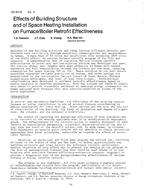The economic justification for an off-peak cooling system for a new Engineering and Computer Science Building at a California university in Long Beach (CSULB) is presented. The central cooling plant design included master plan to serve the new building plus two adjacent existing buildings. The DOE-2.1B building energy analysis computer program was used to analyze the alternate systems, and construction costs were developed from detailed design layouts. Conventional HVAC systems were compared to ice storage systems, using simple payback and life-cycle cost (LCC) techniques that included rebates from the utility, Southern California Edison Company.
A conventional chilled water plant with electric chillers and cooling tower was compared to an ice storage system with submerged coil ice makers, screw compressors, and evaporative condenser under two operating modes. The analysis demonstrated that the ice storage system with two compressors designed for load leveling had the lowest LCC present worth. By investing $314,540 in the ice storage system, the on-peak demand was reduced by 251 kW and the annual electric cost by $16,426. With the $50,200 rebate available from the utility for the reduced on-peak demand, the cost was calculated to be $25,000 less than the conventional system, and over the 20-year life of the equipment, the university will save $221,000.
Units: I-P
Citation: Symposium, ASHRAE Transactions, 1988, vol. 94, pt. 1, Dallas, TX
Product Details
- Published:
- 1988
- Number of Pages:
- 25
- File Size:
- 1 file , 1.4 MB
- Product Code(s):
- D-DA-88-25-5


